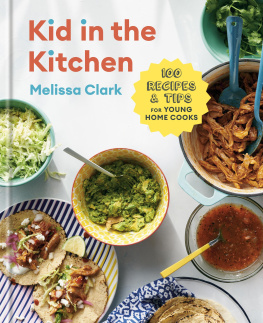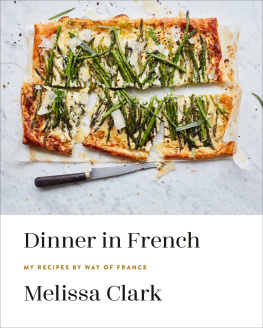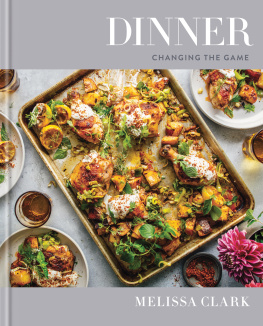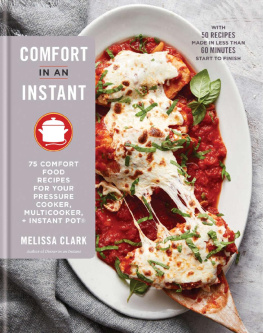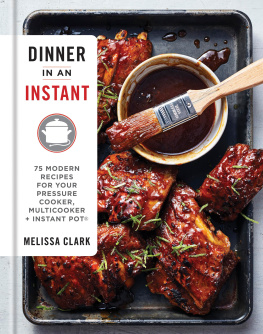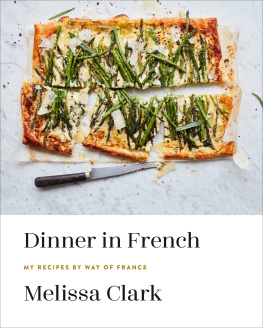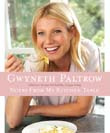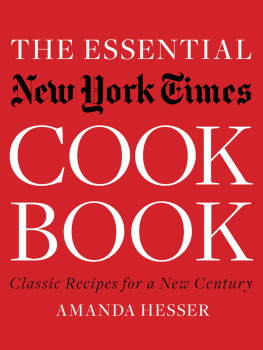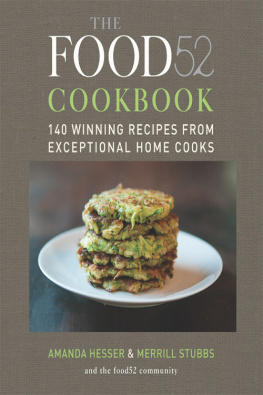

Dedication
For Daniel and Dahlia,
who sustain me,
every season of the year

Contents


Because the pagination of this electronic edition does not match the print edition from which it was created, any references to specific page numbers should be ignored. Instead, to locate a specific recipe within the text, please use the search feature of your e-book reader.
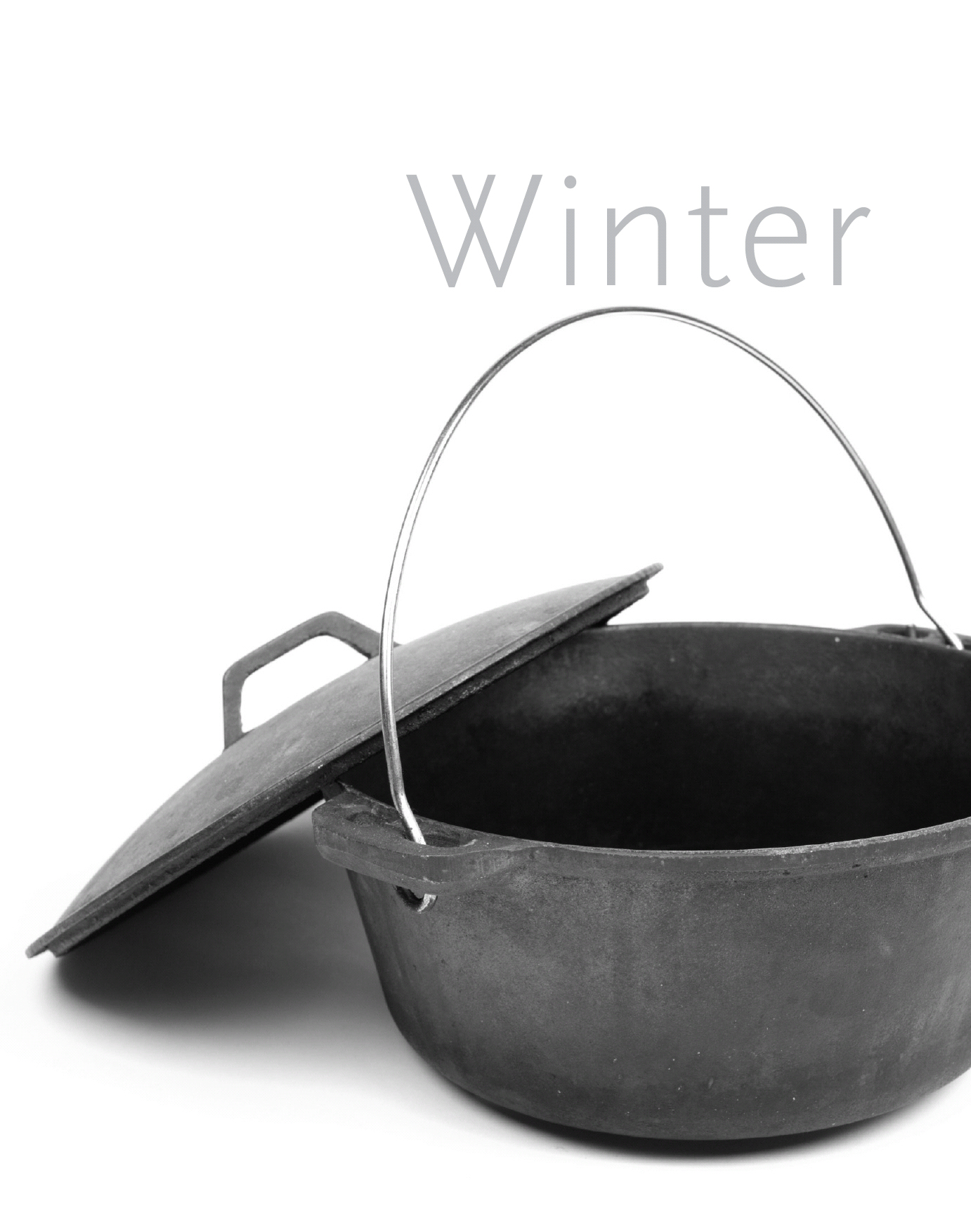
I n winter, Brooklyns Grand Army Plaza farmers market is strictly for the hard core. The wind shoots mercilessly across the park and some mornings are so frigid that the milk we just bought stipples with ice as it bumps along in the bottom of the stroller. A damp, bitter cold invades your bones and burns the skin on your fingertips the second you take your gloves off to sort through a half-frozen mound of spinach in order to gather a small pile of unwilted leaves.
But I go almost every week, wrapping myself in sweaters and scarves and knee-length down coat. My daughter, Dahlia, gets the cocoon treatment, first zipped into a snowsuit, then into bunting, before being sealed in beneath a windproof plastic liner. Even so, when she bites off her mittens, her hands glow red in minutes. Oddly, Daniel, my husband, wears a leather jacket and no gloves, but he has a whole other kind of metabolism going on.
Trudging through the cold to wander the relatively barren farm stands definitely feels a little nuts when instead, nestled on the couch with my steaming tea and hot, buttered toast, I can order pretty much whatever I want with a quick click to my local online grocer.
But I go nonethelesseven on the dampest, windiest, grayest, most foul morningsbecause, well, I like it.
I like the farmers, sleepily zombie-like in their coveralls and parkas, hopping side to side to stay warm. The quietness of the cold gives us an opportunity for conversation, and now is the time to seek out their advice on everything from celery root trimming to mulching, chatter that the busier seasons dont allow.
I like the other shoppers, as freezing and obsessed as I am, with their dogs and kids and spouses in tow, breathing steam into the air. Its a quirky winter community of diehards, a loosely knit group connected by a quest for the tastiest collard greens, the perkiest parsnips.
But maybe most important, I like the way my weekly trips ground me in the seasons. Its one thing to know intellectually that in January, turnips are in season (or in storage) and zucchini is not. But it is another thing entirely to experience the limits firsthand, and to settle into them, accepting them as winters inevitabilities, like 4:00 P.M. sunsets and salt stains on leather boots.
In a way its a little like moving from the big city of summer producewith a population so vast its impossible to know everyones name (what exactly are those little yellow plums called?)to the small town of winter, where the occupants are few and you can get to know them and all their charms and quirks intimately. I dont know that I would have fallen as hard for rutabagas if I hadnt bought them, week in and week out, from December to April. But now Im completely smitten with their velvety, pumpkin-like flesh.
Actually, now that I know it so well, I can honestly say Im a little in love with winters bountyeven if I can name the offerings on all my fingers and toes. My kitchen diary lists the typical winter haul: apples, some crisp and juicy for immediate snacking, some mealy and soft to make into applesauce. Kale, often yellowed around the crinkled edges but still succulent and green-tasting, just begs for a braise spiked with anchovies and pecorino (page 12). The collards, with sweet, green-black leaves as thick as leather, are best boiled, then dressed with lemon and plenty of good olive oil (page 83). Pale heads of cabbage as big and heavy as bowling balls may be borscht bound (page 348) or roasted (page 88). I keep the kohlrabi for snacking on raw, sweet as carrots but running with juice. Golden and purple turnips with delicate pale flesh and waxy rutabaga are perfect for roasting with the markets treacly maple syrup (page 361). Hairy celery roots get whittled down for crunchy salads, punctuated by roasted hazelnuts and bitter arugula (page 40). Dark orange sweet potatoes are to bake in their jackets until the juices seep out and turn sticky. There are eggs with marigold yolks, and creamy-topped milk from contented but probably very cold cows.
Even when the ground is iced over with nothing new peeping out for months, the possibility of discovery is always there, lurking next to the onions. Sometimes I snag a treat. Once it was frozen summer heirloom tomatoes from farmer Ray Bradley. I bought four large ones to melt into pasta sauce with rosemary and his bacon, a wintry version of a sauce that I usually save for September (page 262). Another week, he had frozen raspberries that Dahlia and I ate with local yogurt and more of that thick maple syrup.
You never know what the meat guys are going to show up with, and I love the challenge of experimenting with cuts not usually seen in the supermarket. Ive bought everything from oxtails to turkey necks to smoked ham hocksthen figured out what to do with them after I got home.
Once, I picked up a pair of pigs feet, expecting four pink, neatly sliced halves that had been defurred, blanched, bleached, and well cleaned, the toenails manicured off. Thats the rather sterilized product you get at the supermarket.
These feet were about as close to the source as Id ever comewhole and intact, muddy toenails and all, with a thick coat of dark brown and gray mottled bristles covering the flesh.
I spent hours on the Internet and Twitter trying to figure out how to handle them.
Blanch them in boiling water, then scrape the hair off with the back of a knife.
Singe the bristles off with a blowtorch but open the window firstburning pig fur stinks.
Shave the trotters with a razoror several.
I dallied so long trying to decide what to do that the feet festered in the fridge and I had to throw them out. I cant say I wasnt relieved.
Compared to this, the oxtails were a breeze. I seared them until bronzed, then braised them with port and red wine until the meat was short ribssucculent and falling off the bone, enveloped in a brawny, glossy gravy (page 25). Then we ate them with roasted turnips and potatoes (page 29).
Of course my trips to the market in winter are shorter and more to the point than during the rest of the year. There is no socializing with other parents-with-toddlers on a grassy patch at the mouth of the park. Not much chatting about whats about to come into season, because for months, the answer is the same: nothing much. No comparing recipes for celery root because after weeks (even years) of prior discussions, all the regulars know each others tricks by now.
Instead we go, we shop, we shiver, we come home, we unpack our minimal yet cherished spoils, and make yet another pot of tea to thaw the icicles out of our bloodstreams.
Next page

